Plans to use traditional Japanese kintsugi techniques to make them look as good as new, or perhaps even better.
Residents of Kumamoto are still picking up the pieces after being rocked by a series of destructive earthquakes, and no doubt many of those pieces are shattered ceramics. Traditional Japanese table settings feature a multitude of small plates and bowls for individual dishes and diners, and the country’s rich tea and flower arrangement cultures mean that most homes also have a collection of ceramic cups, pots, and vases.
While you could outfit your entire home with stuff from the 100 yen store, some of the ceramics broken in the Kumamoto quakes are antiques or heirlooms with considerable sentimental value. Still, a cracked container has no function anymore, so unless victims of the disaster want sake dribbling down their hands every time they pour themselves a drink, it’s time to throw those fractured cups away along with the rest of their damaged kitchenware right?
Actually, it’s not, thanks to people like Kunio Nakamura. Nakamura runs the Roku Jigen cafe in Tokyo, a gathering place for lovers of literature and music. Another passion of Nakamura’s is kintsugi, a traditional Japanese pottery repair method.
地震で割れた大切な器の修復を頼まれることが多い(親の形見や家宝など)落ち着いたら熊本や大分にも「うつわの修復ボランティア」に伺うつもりです。どうしても大切な器は捨てないで保管しといて下さい。 pic.twitter.com/ArRIfKejNk
— ナカムラクニオ Kunio Nakamura (@6jigen) April 18, 2016
Kintsugi is often translated as “golden joinery.” However, the word could also be interpreted as “golden succession,” which gives an insight into the philosophy behind it, which accepts that after enough use, pottery is going to get cracked and broken. Kintsugi celebrates those character-enhancing fractures by patching the pieces back together with bonding lacquer mixed with gold or other eye-catching precious metals.
As a lover of the arts, Nakamura has been putting his kintsugi skills to use helping others for years. To this day, he repairs pieces damaged in the 2011 earthquake that devastated Japan’s Tohoku region.
東日本大震災で割れたうつわの修復をまだまだ作業中ですが、大きな部分が欠損すると直すのが難しくなります。大切なうつわは、陶片を同じビニール袋にいれて保管して頂けると助かります。 pic.twitter.com/LAQoy7eTBt
— ナカムラクニオ Kunio Nakamura (@6jigen) April 18, 2016
Following last week’s Kumamoto earthquakes, Nakamura has been sending out tweets reminding people not to hastily toss out their cracked and broken pottery. Instead, he encourages them to tape the smaller pieces to the larger ones and store the bundle in a plastic bag. Once the more pressing recovery operations settle down, Nakamura himself plans to travel to homes in Kumamoto and offer his services, free of charge, to those with broken ceramics.
▼ Nakamura is also skilled in kyonaoshi, in which pottery is repaired in a way which minimizes the visibility of the damage sustained.
割れた場所を同じ色で修復する「共直し」も出来ます。欠片を本体にテープで貼って置くと便利です。特に黒っぽい器なら綺麗に修復可能です。 pic.twitter.com/H2F4eUalnT
— ナカムラクニオ Kunio Nakamura (@6jigen) April 18, 2016
Still, past a certain extent of damage pottery becomes unrepairable. Even then, though, Nakamura implores people to keep the broken pieces. While the dish may never be made whole again, the fragments can be recrafted into other items, such as the chopstick rests seen here.
大切なうつわが粉々に砕けてしまったら、陶片を呼び継ぎして箸置きをつくったりも出来ます。欠片も何か役に立つので保存しといて下さい(うつわの修復ボランティアに伺う予定です) pic.twitter.com/xWB2lcLQC0
— ナカムラクニオ Kunio Nakamura (@6jigen) April 18, 2016
So just like it’s important for the people of Kumamoto to hang on to hope in these trying times, so too should they hang on to their broken ceramics.
Source: Togech, Twitter/@6jigen

 New green tea Japanese Kit Kat released to raise funds for earthquake-damaged Kumamoto region
New green tea Japanese Kit Kat released to raise funds for earthquake-damaged Kumamoto region Fukushima supermarket sells earthquake-damaged beers as “heroes”
Fukushima supermarket sells earthquake-damaged beers as “heroes” Free Zen-like mobile game about broken pots contains the wisdom of ancient Japanese philosophy
Free Zen-like mobile game about broken pots contains the wisdom of ancient Japanese philosophy Breakfast made beautiful by designer who creates stunning zen garden toast art and more【Pics】
Breakfast made beautiful by designer who creates stunning zen garden toast art and more【Pics】 97 percent of Kumamoto convenience stores open for business just three days after major quakes
97 percent of Kumamoto convenience stores open for business just three days after major quakes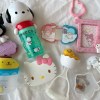 McDonald’s new Happy Meals offer up cute and practical Sanrio lifestyle goods
McDonald’s new Happy Meals offer up cute and practical Sanrio lifestyle goods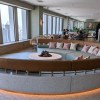 All-you-can-drink Starbucks and amazing views part of Tokyo’s new 170 meter-high sky lounge
All-you-can-drink Starbucks and amazing views part of Tokyo’s new 170 meter-high sky lounge Starbucks reopens at Shibuya Scramble Crossing with new look and design concept
Starbucks reopens at Shibuya Scramble Crossing with new look and design concept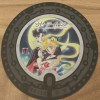 Beautiful Sailor Moon manhole cover coasters being given out for free by Tokyo tourist center
Beautiful Sailor Moon manhole cover coasters being given out for free by Tokyo tourist center More foreign tourists than ever before in history visited Japan last month
More foreign tourists than ever before in history visited Japan last month The oldest tunnel in Japan is believed to be haunted, and strange things happen when we go there
The oldest tunnel in Japan is believed to be haunted, and strange things happen when we go there Disney princesses get official manga makeovers for Manga Princess Cafe opening in Tokyo
Disney princesses get official manga makeovers for Manga Princess Cafe opening in Tokyo Hanton rice — a delicious regional food even most Japanese people don’t know about, but more should
Hanton rice — a delicious regional food even most Japanese people don’t know about, but more should Is the new Shinkansen Train Desk ticket worth it?
Is the new Shinkansen Train Desk ticket worth it? Sanrio 2015 mid-election polls show Hello Kitty losing to visual kei band by wide margin
Sanrio 2015 mid-election polls show Hello Kitty losing to visual kei band by wide margin We try out “Chan Ramen”, an underground type of ramen popular in the ramen community
We try out “Chan Ramen”, an underground type of ramen popular in the ramen community Beautiful new Final Fantasy T-shirt collection on the way from Uniqlo【Photos】
Beautiful new Final Fantasy T-shirt collection on the way from Uniqlo【Photos】 Foreign English teachers in Japan pick their favorite Japanese-language phrases【Survey】
Foreign English teachers in Japan pick their favorite Japanese-language phrases【Survey】 There’s a park inside Japan where you can also see Japan inside the park
There’s a park inside Japan where you can also see Japan inside the park Japanese convenience store packs a whole bento into an onigiri rice ball
Japanese convenience store packs a whole bento into an onigiri rice ball Studio Ghibli releases Kiki’s Delivery Service chocolate cake pouches in Japan
Studio Ghibli releases Kiki’s Delivery Service chocolate cake pouches in Japan Japan’s bone-breaking and record-breaking roller coaster is permanently shutting down
Japan’s bone-breaking and record-breaking roller coaster is permanently shutting down New definition of “Japanese whiskey” goes into effect to prevent fakes from fooling overseas buyers
New definition of “Japanese whiskey” goes into effect to prevent fakes from fooling overseas buyers Foreign passenger shoves conductor on one of the last full runs for Japan’s Thunderbird train
Foreign passenger shoves conductor on one of the last full runs for Japan’s Thunderbird train Our Japanese reporter visits Costco in the U.S., finds super American and very Japanese things
Our Japanese reporter visits Costco in the U.S., finds super American and very Japanese things Kyoto bans tourists from geisha alleys in Gion, with fines for those who don’t follow rules
Kyoto bans tourists from geisha alleys in Gion, with fines for those who don’t follow rules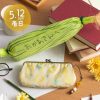 Studio Ghibli unveils Mother’s Day gift set that captures the love in My Neighbour Totoro
Studio Ghibli unveils Mother’s Day gift set that captures the love in My Neighbour Totoro Domino’s Japan now sells…pizza ears?
Domino’s Japan now sells…pizza ears? New Japanese KitKat flavour stars Sanrio characters, including Hello Kitty
New Japanese KitKat flavour stars Sanrio characters, including Hello Kitty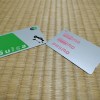 Sales of Japan’s most convenient train ticket/shopping payment cards suspended indefinitely
Sales of Japan’s most convenient train ticket/shopping payment cards suspended indefinitely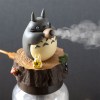 Sold-out Studio Ghibli desktop humidifiers are back so Totoro can help you through the dry season
Sold-out Studio Ghibli desktop humidifiers are back so Totoro can help you through the dry season Japanese government to make first change to romanization spelling rules since the 1950s
Japanese government to make first change to romanization spelling rules since the 1950s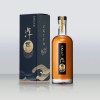 Ghibli founders Toshio Suzuki and Hayao Miyazaki contribute to Japanese whisky Totoro label design
Ghibli founders Toshio Suzuki and Hayao Miyazaki contribute to Japanese whisky Totoro label design Doraemon found buried at sea as scene from 1993 anime becomes real life【Photos】
Doraemon found buried at sea as scene from 1993 anime becomes real life【Photos】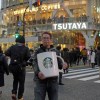 Tokyo’s most famous Starbucks is closed
Tokyo’s most famous Starbucks is closed One Piece characters’ nationalities revealed, but fans have mixed opinions
One Piece characters’ nationalities revealed, but fans have mixed opinions We asked a Uniqlo employee what four things we should buy and their suggestions didn’t disappoint
We asked a Uniqlo employee what four things we should buy and their suggestions didn’t disappoint Princesses, fruits, and blacksmiths: Study reveals the 30 most unusual family names in Japan
Princesses, fruits, and blacksmiths: Study reveals the 30 most unusual family names in Japan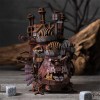 Studio Ghibli’s new desktop Howl’s Moving Castle will take your stationery on an adventure
Studio Ghibli’s new desktop Howl’s Moving Castle will take your stationery on an adventure Anime figures damaged in earthquake? Tokyo manufacturer offers to repair them for free
Anime figures damaged in earthquake? Tokyo manufacturer offers to repair them for free Two of Japan’s biggest chains travel to disaster-stricken Kumamoto to hand out free beef bowls
Two of Japan’s biggest chains travel to disaster-stricken Kumamoto to hand out free beef bowls Japanese beer company Sapporo releases special-edition can to support Kumamoto Castle recovery
Japanese beer company Sapporo releases special-edition can to support Kumamoto Castle recovery Nobel Prize-winner Shuji Nakamura to Japan’s young people: “Get out of Japan”
Nobel Prize-winner Shuji Nakamura to Japan’s young people: “Get out of Japan” Karate dojo students practice under freezing waterfall… in the middle of winter
Karate dojo students practice under freezing waterfall… in the middle of winter Filled to bursting point? Rush-hour crush on Tokyo subway leaves train with broken window
Filled to bursting point? Rush-hour crush on Tokyo subway leaves train with broken window Full cast of live-action Final Fantasy X play appears in costume for the first time【Pics】
Full cast of live-action Final Fantasy X play appears in costume for the first time【Pics】 Free onsen! Kyushu resort shipping hot spring water to homes across Japan in thank-you program
Free onsen! Kyushu resort shipping hot spring water to homes across Japan in thank-you program Chance to see Japan bucket-list must-see scenery “Road to Laputa” gone for good?
Chance to see Japan bucket-list must-see scenery “Road to Laputa” gone for good? Is Kumamoto City surpassing Tokyo as the fashion capital of Japan?
Is Kumamoto City surpassing Tokyo as the fashion capital of Japan? Attack on Titan author offers message of support, artwork for the people of Kumamoto
Attack on Titan author offers message of support, artwork for the people of Kumamoto Messages of support from Taiwan warm the hearts of Kumamoto earthquake victims
Messages of support from Taiwan warm the hearts of Kumamoto earthquake victims Miniature Kumamoto Castle exhibition lets you marvel at its remarkable architecture up close
Miniature Kumamoto Castle exhibition lets you marvel at its remarkable architecture up close Touching messages of support for Kumamoto by artists in China and the manga world
Touching messages of support for Kumamoto by artists in China and the manga world Osaka earthquake: Scenes show damage from strongest tremor to hit the region in decades
Osaka earthquake: Scenes show damage from strongest tremor to hit the region in decades
Leave a Reply